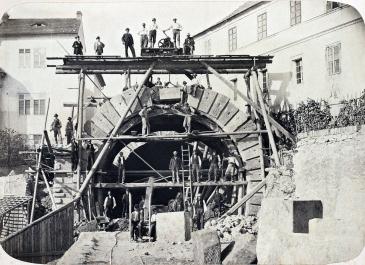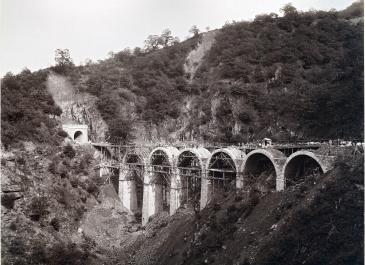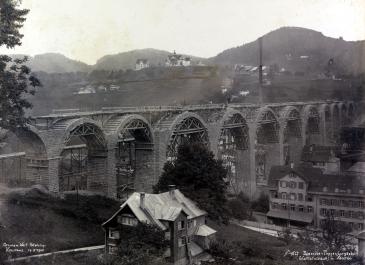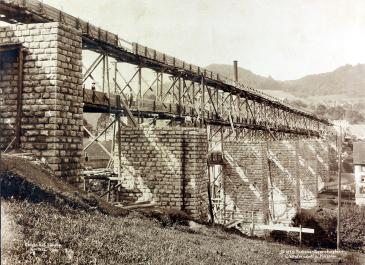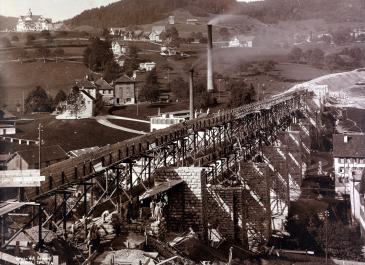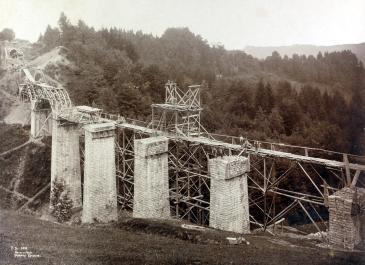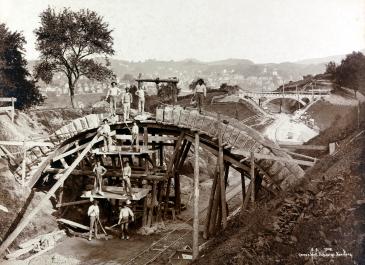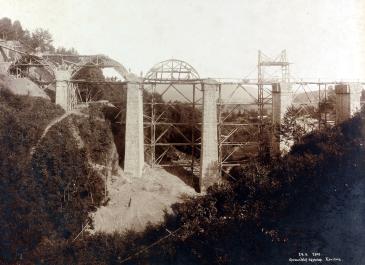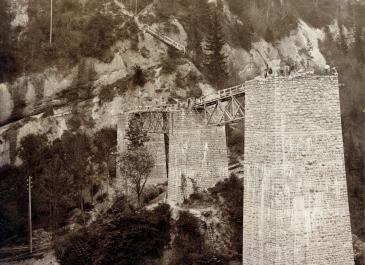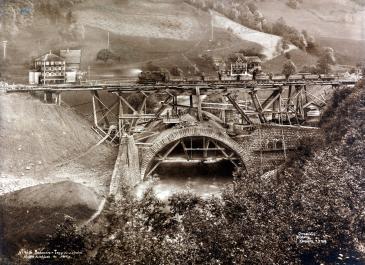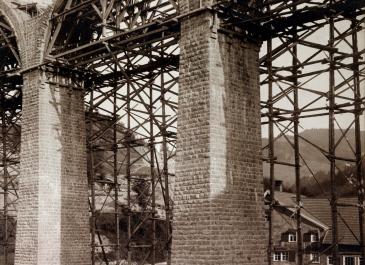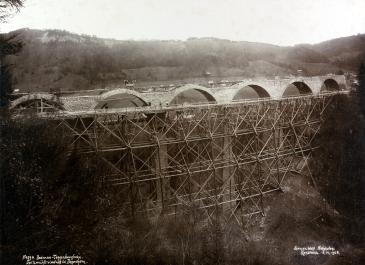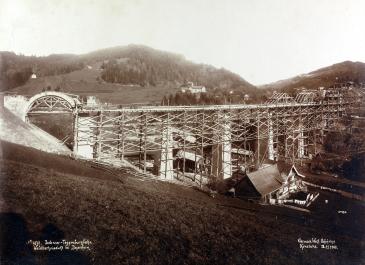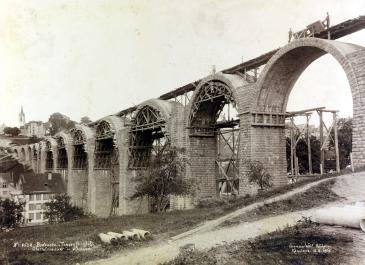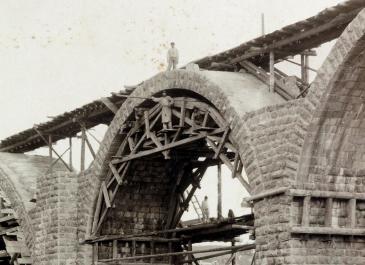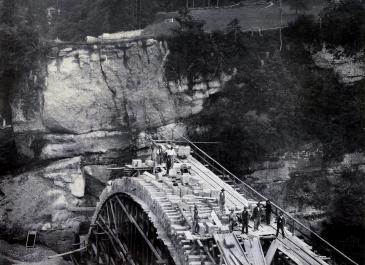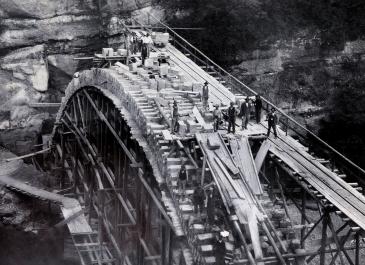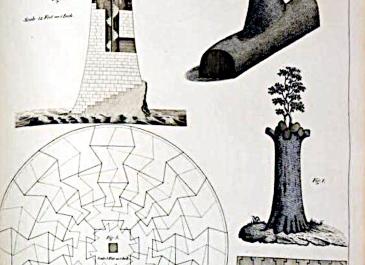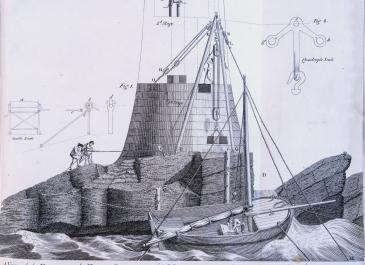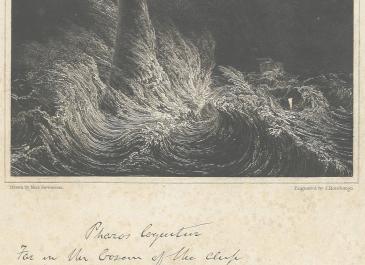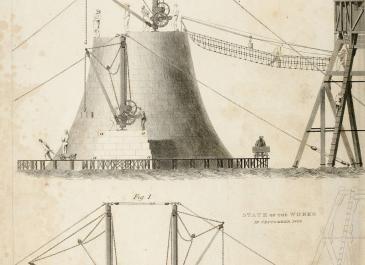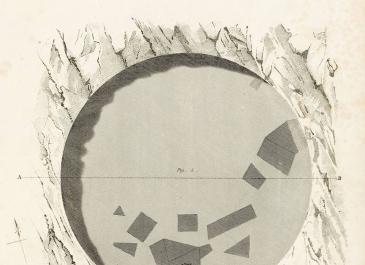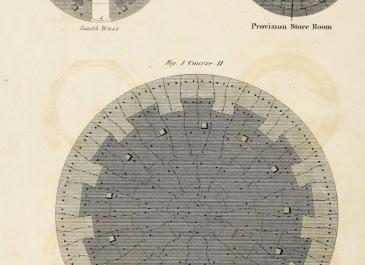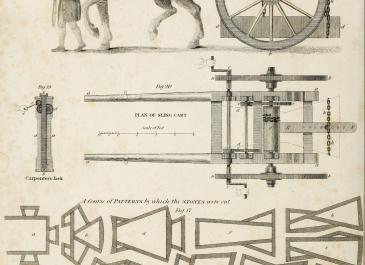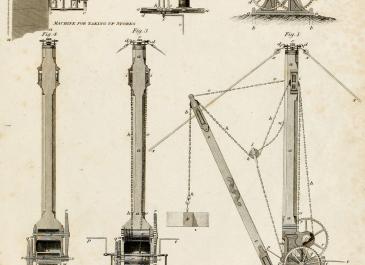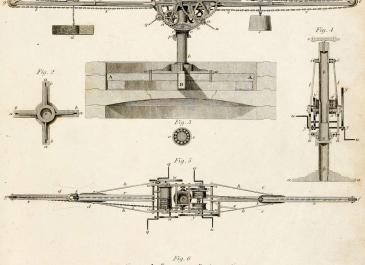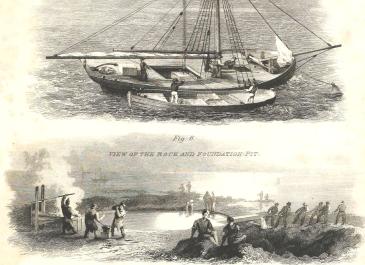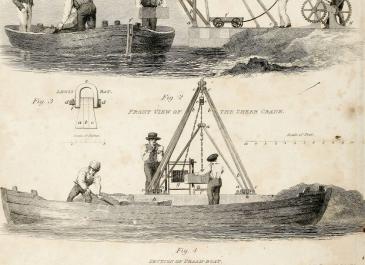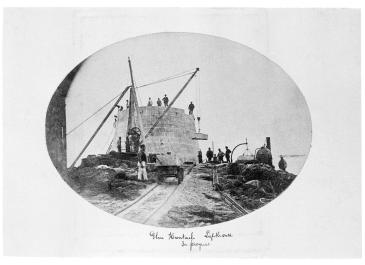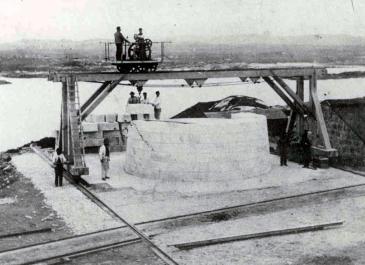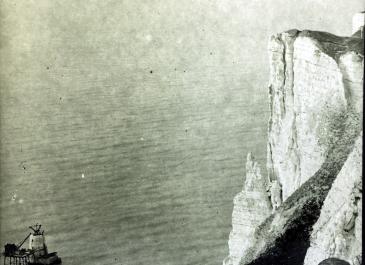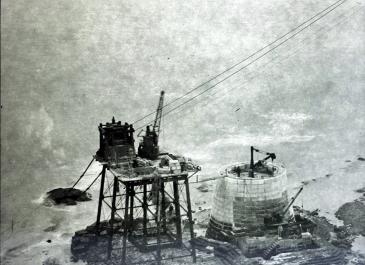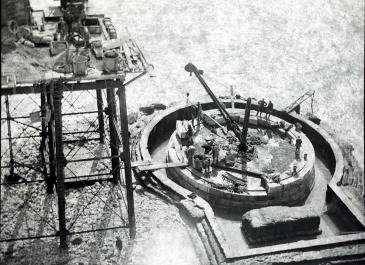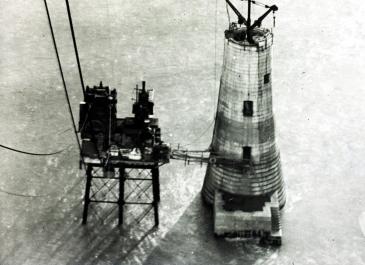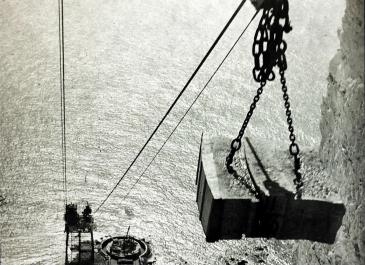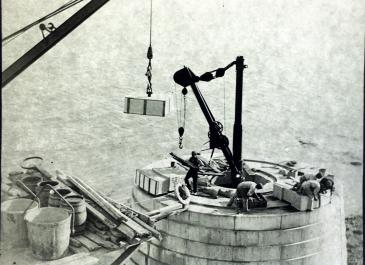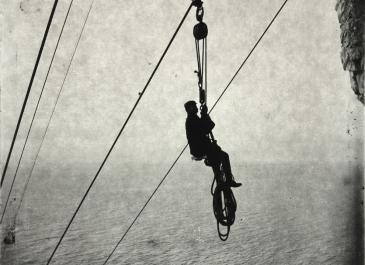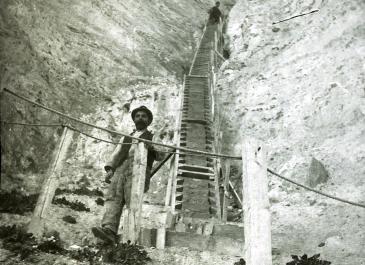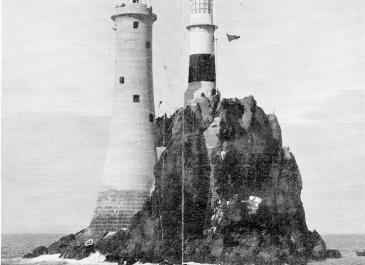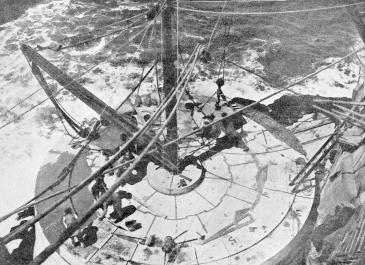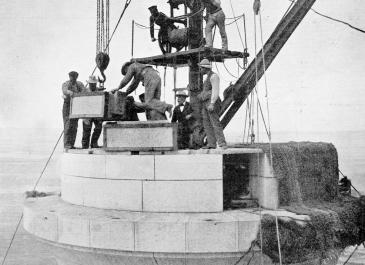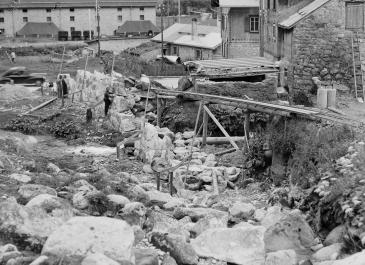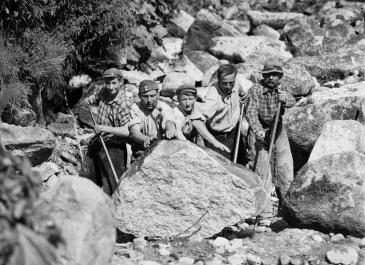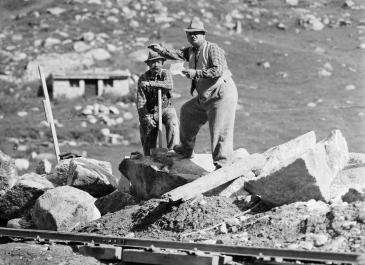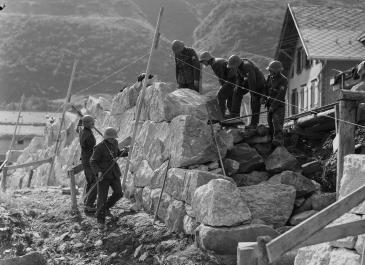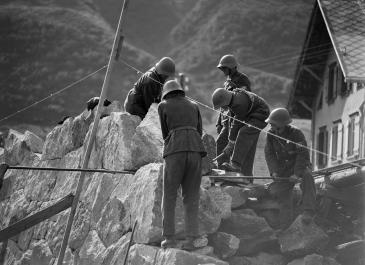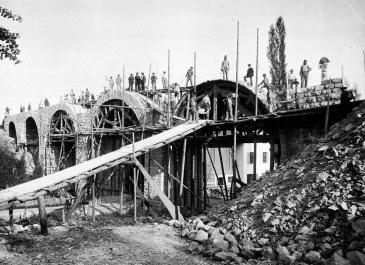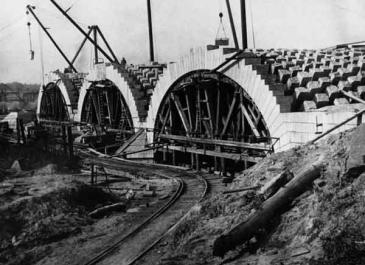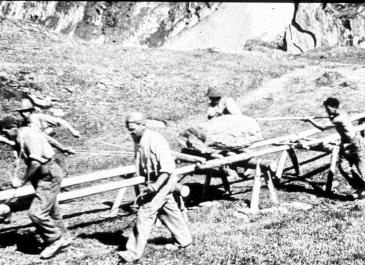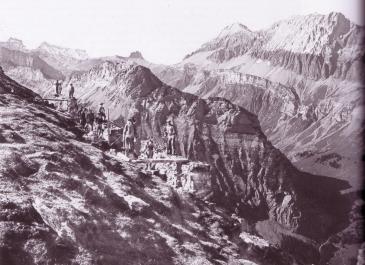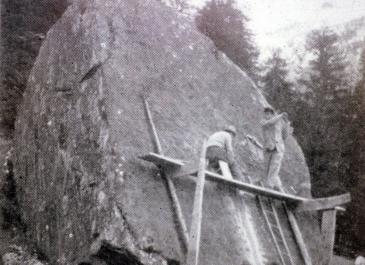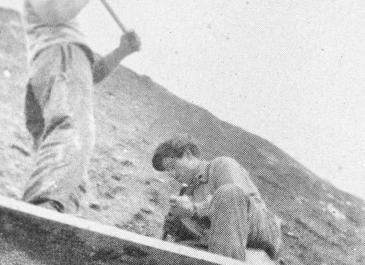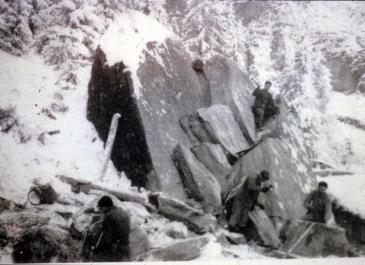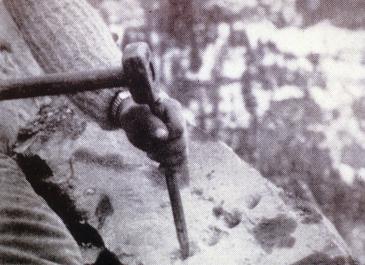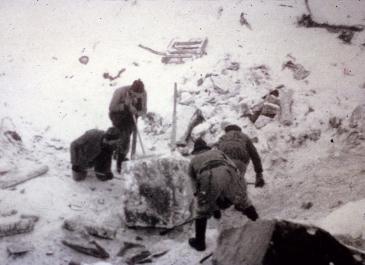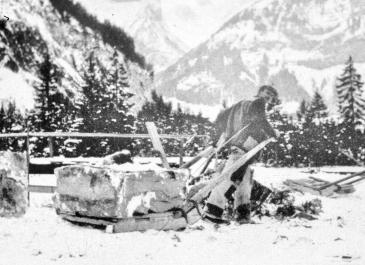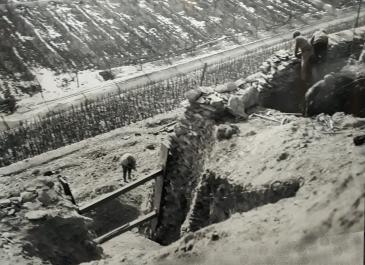Building with stone. Historic building sites around the world
Building the Bodensee Toggenburg railway, 1903
Construction of the railway line Bodensee - Toggenburg in Switzerland, 1903
Source: ETH e-pics
STONE LIGHTHOUSES
History
The modern era of lighthouses began at the turn of the 18th century, when increasing transatlantic trade required the construction of efficient lighthouses. Lighthouses now had to be built far off the coast. To make this possible, a construction technique was developed in which the lighthouses were built using large blocks of stone. The interlocking shape of the stone blocks meant that the tower stood like a monolithic large block of stone in the sea.
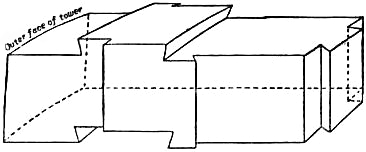
The production of the granite blocks with dovetail joints by stone masons was a major achievement. The finished stone blocks were preassembled on land to check the fit. The masonry was then taken apart and transported by ship to the construction site.
The first lighthouse made of interlocking masonry blocks was built in 1759 on the Eddystone Rocks reef off Plymouth, England. The interlocking masonry blocks remained the most important material for the construction of lighthouses until they were replaced by reinforced concrete construction in the 20th century. The construction of lighthouses led to numerous technical innovations. New cranes were developed, railroads for moving the stone blocks and new mortar compositions.
Builders and Engineers
John Smeaton (8. Juni 1724 - 28. Oktober 1792) was a British civil engineer who was responsible for the design of bridges, canals, harbors and lighthouses. He was also a skilled mechanical engineer and an eminent physicist. Smeaton was the first self-proclaimed "civil engineer". He pioneered the use of hydraulic lime as a binder in mortar exposed to the sea.
John Rennie, (born June 7, 1761, Phantassie, East Lothian, Scotland—died October 4, 1821, London, England), Scottish civil engineer who built or improved canals, docks, harbours, and bridges throughout Britain.
Robert Stevenson was responsible for the design and supervision of more than 25 lighthouses, including the Bell Rock Lighthouse in 1811. Not only did the structures have to be designed to withstand the great forces of nature - waves, currents and wind - but the designer also had to design the construction method and lifting equipment etc. required to build a monolith, usually on a rock in the middle of the ocean and sometimes far offshore.
Francis Watt, Foreman and millwright who made the development and construction of various technical facilities for the construction of lighthouses possible. He developed a railroad that made it possible to transport the stone blocks from the landing stage to the tower construction site (and later influenced the development of the railroad on land) and various lifting devices that made it possible to lift and precisely move the stone blocks.
Eddystone Lighthouse, 1759
Year: 1759
Engineer: John Smeaton, mathematical instrument maker and civil engineer
After several wooden and metal lighthouses had been destroyed by storms, John Smeaton, an instrument maker and mathematician, was commissioned in 1756 to design a robust construction for the lighthouse. Smeaton suggested that the lighthouse be built of stone and shaped like the trunk of a tree, wider at the bottom, tapering towards the top.
Work on site began in 1756, starting with the foundation being hewn out of the reef and interlocked with the stone blocks. Construction work was interrupted in winter. During this time, the stonemasons prepared the stone blocks for the lighthouse on land. Granite from Cornwall was used for the blocks of the outermost stones. Blocks of limestone from Portland were used for the core of the tower. Each stone block weighed over a ton. In addition to the innovative construction technique with interlocking stone blocks, Smeaton was the first to use hydraulic lime (as a precursor to cement) to fill the joints between the stone blocks. Construction of the lighthouse lasted until 1759.
Smeaton's lighthouse was 18 m high and had a diameter of 7.9 m at the base and 5.2 m at the top. The lighting consisted of 24 large tallow candles.
In 1877 the tower had to be replaced as the rock underneath the lighthouse eroded away. The original lighthouse was dismantled and rebuilt at Plymouth.
Further Images and Information:
Bellrock Lighthouse, 1811
Year: 1811
Engineers: John Rennie, Robert Stevenson, Francis Watt
The tower, built from interlocking stone blocks, replaced earlier constructions made of wood and metal, which were repeatedly washed away by storms. The difficulty in erecting the stone tower was that the rock on which it was built is only not flooded by water for a few hours a day. Construction work began in 1804 and lasted until 1811. 35m high.
Further Images and Information:
Institution of Civil Engineers Museum Scotland
Project Gutenberg Book "An Account of the Bell Rock Light-House by Robert Stevenson"
David C. Shallcross "Building the bellrock lighthouse"
Dubh Artach Lighthouse, 1872
Year: 1872
Engineer: Thomas and David Stevenson
Further images and Information:
Beachy Head Lighthouse, 1902
Year: 1902
Engineer: Sir Thomas Matthews
The last lighthouse to be built as a stone tower with interlocking blocks. From 1900 to 1902, under the direction of Sir Thomas Matthews, the chief engineer of Trinity House, the Beachy Head lighthouse was built about 165 meters seaward from the foot of the cliffs. For the construction, a temporary cableway was installed from the cliff to transport workers and stones to an iron sea platform next to the lighthouse. 3,660 tons of granite from Cornwall were used to build the tower. Height 33 m.
Weitere Bilder und Informationen:
Further Images and Information:
Paper "The Argus"
High Vistas Photography
Beachy Head Website
"The Keep" Photo collections
Flickr
Fastnet Lighthouse, 1904
Year:1897 - 1904
Engineer: William Douglass, James Kavanagh
Construction started in 1897. 2,047 dovetailed blocks of Cornish granite were laid, weighing 4,400 t. Up to the level of the entrance floor, 18 metres above high-water mark, the tower is solid. A small steamship, the Ierne, was specially constructed for carrying the blocks, which weighed between 1.8 and 3.0 t) out to the island, . The new lighthouse entered service on 27 June 1904, Height: 54m
Further Images and Information:
Account of-the-building of the Fastnet lighthouse
www.irishlights.ie
Southern Star Paper
Rob Cross on Twitter
National library of Ireland
State library of south Australia
Avalanche protection wall, Gurtnellen, 1954
Building an avalanche protection wall with masons and military
Source: ETH e-pics
Railway Viaduct, Uerikon, 1894
Construction of a railway viaduct in Uerikon, Switzerland, 1894
Source: ETH e-pics
